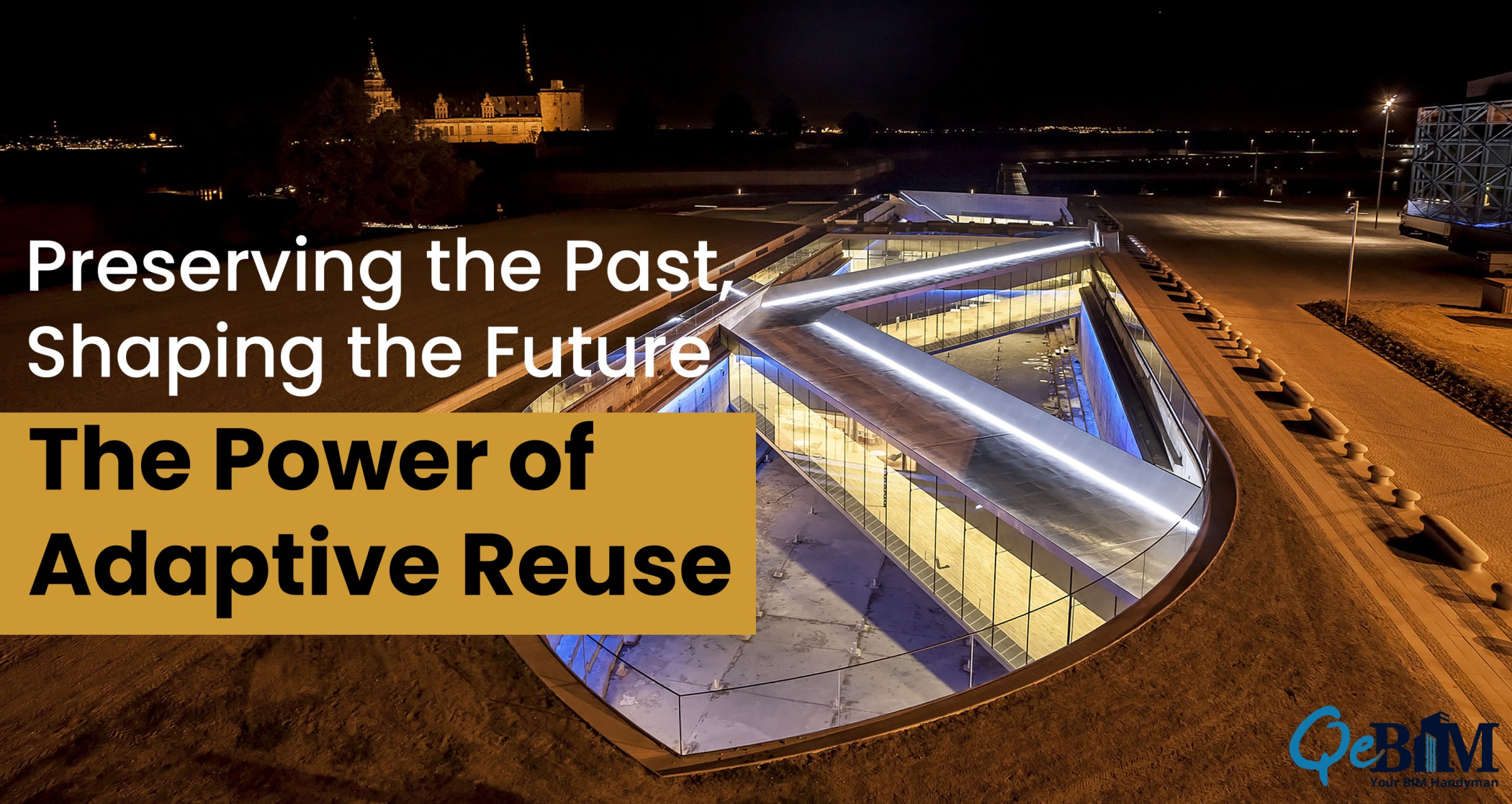Preserving the Past, Shaping the Future: The Power of Adaptive Reuse

Historic buildings are treasures that embody the stories and culture of our past. These magnificent architectural wonders serve as a profound tribute to the craftsmanship and artistry of earlier times. However, as cities grow and urban landscapes change, many historic structures face the threat of demolition or neglect. This is where adaptive reuse comes into play, offering a sustainable and innovative solution to preserve these buildings while repurposing them for modern needs with the help of Scan to BIM Services. Scan to BIM allows us to scan and collect the existing data of these buildings to analyze them in detail and further transform them into a new design (BIM Model), maintaining originality wherever required. In this blog post, we will explore the concept of adaptive reuse and examine its impact on our urban environments.
Adaptive reuse refers to taking an existing building, often one with historical significance, and adapting it to serve a new purpose. This approach embraces the idea that old buildings can be given a new lease on life rather than being torn down and replaced with new construction. By repurposing these structures, we preserve our architectural heritage and reduce the environmental impact associated with demolition and new construction.
The practice of adaptive reuse has garnered considerable momentum in recent years. As per a study conducted by the National Trust for Historic Preservation, over 90% of cities surveyed in the United States have actively undertaken projects involving adaptive reuse. The reasons for this trend are manifold. First and foremost, historic buildings are often located in prime urban areas, making them ideal candidates for revitalization. Additionally, adaptive reuse projects can be economically advantageous, as they often come with tax incentives and cost savings compared to new construction.
One area where adaptive reuse has thrived is in converting old industrial buildings into vibrant mixed-use spaces. Factories, warehouses, and mills that were once bustling with manufacturing activities have been transformed into modern offices, retail spaces, and residential units with the accurate Point Cloud to BIM Services. This breathes new life into these structures and revitalizes the surroundings. A study by the Preservation Green Lab found that rehabilitating historic industrial buildings can generate up to three times as many jobs as new construction projects.
Moreover, adaptive reuse plays a crucial role in sustainable development. The construction industry significantly contributes to carbon emissions, but we can substantially reduce the environmental impact by repurposing existing buildings. According to the U.S. Green Building Council, building reuse can lower energy consumption by up to 90% compared to new construction. Additionally, the embodied energy in the existing structure is preserved, as it takes less energy to adapt and renovate than to demolish and rebuild. By choosing adaptive reuse, we save valuable resources and contribute to our cities' overall sustainability.
The success stories of adaptive reuse are numerous and diverse. One of the examples is the High Line in New York City. What was once an elevated railway track is now a vibrant public park, offering a unique green space in the heart of Manhattan. The transformation of the High Line has not only preserved a piece of the city's history but has also become a catalyst for economic growth, attracting millions of visitors each year.
In Europe, the adaptive reuse of historic buildings has been a longstanding tradition. The Tate Modern in London, housed in the former Bankside Power Station, and the Musée d'Orsay in Paris, located in a former railway station, are just a few examples of how old buildings have been repurposed to house world-class cultural institutions. These projects provide a new life for the buildings themselves and contribute to the cultural tapestry of their individual cities.
While adaptive reuse has proven to be a successful approach, it has its challenges. Historical preservation regulations, limited space for expansion or modern amenities, and the need to strike a balance between maintaining the building's character and accommodating new functions can present hurdles in the adaptive reuse process. Nevertheless, these challenges can be surmounted with meticulous planning, collaboration between architects, developers, and preservationists, and creative design solutions.
Conclusion:
Adaptive reuse offers a sustainable and innovative solution to transform historic buildings for modern purposes. The practice preserves our architectural heritage and contributes to our cities' economic and environmental well-being. With careful consideration and creative design, we can continue to breathe new life into old structures, ensuring that they remain vibrant and relevant for generations to come. By embracing adaptive reuse, we bridge the gap between the past and the present, creating a more sustainable and culturally rich urban environment.












